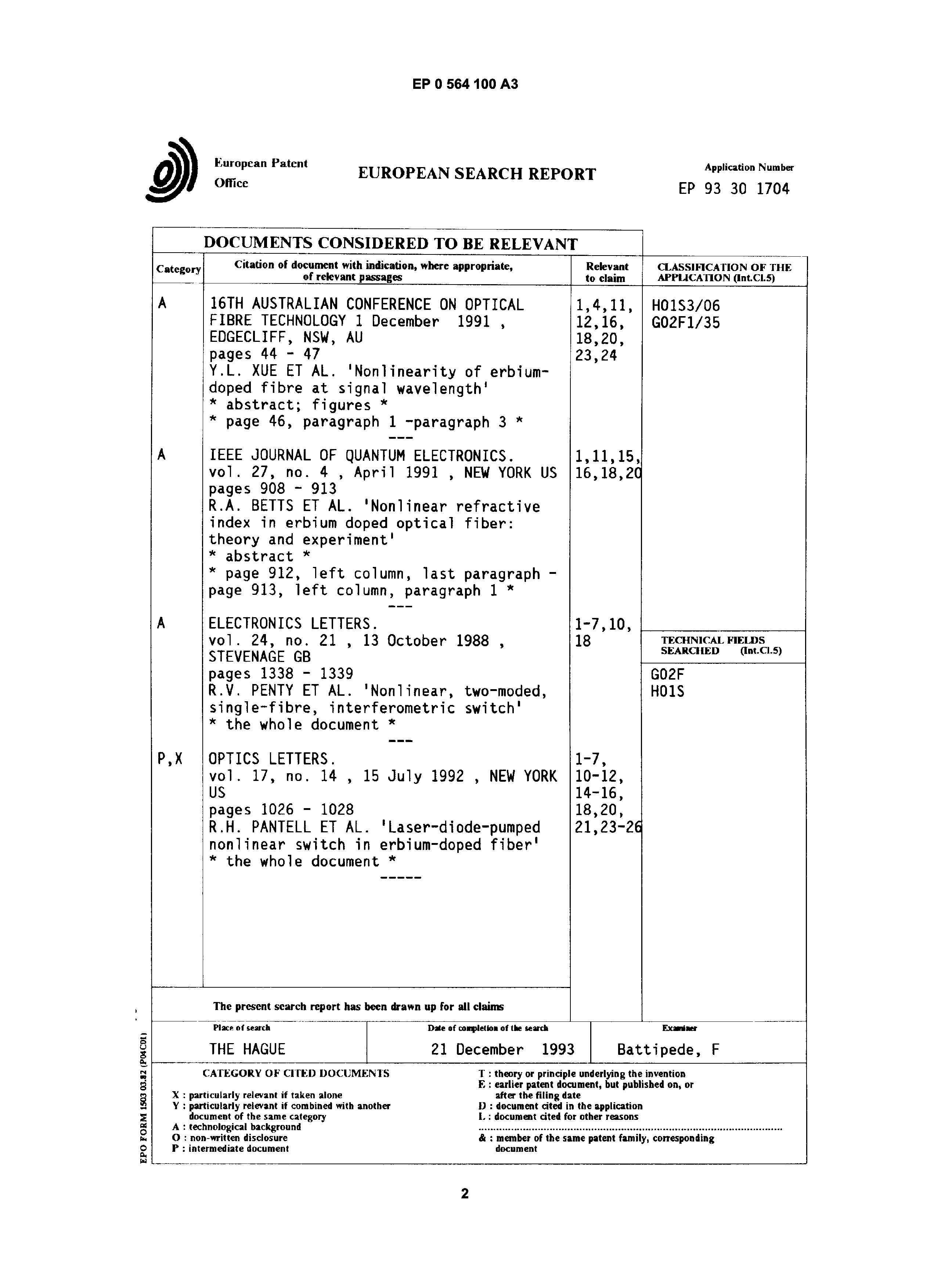| (19) |
 |
|
(11) |
EP 0 564 100 A3 |
| (12) |
EUROPEAN PATENT APPLICATION |
| (88) |
Date of publication A3: |
|
23.02.1994 Bulletin 1994/08 |
| (43) |
Date of publication A2: |
|
06.10.1993 Bulletin 1993/40 |
| (22) |
Date of filing: 05.03.1993 |
|
|
| (84) |
Designated Contracting States: |
|
DE FR GB IT |
| (30) |
Priority: |
31.03.1992 US 861322
|
| (71) |
Applicant: THE BOARD OF TRUSTEES OF
THE LELAND STANFORD JUNIOR UNIVERSITY |
|
Stanford,
California 94305 (US) |
|
| (72) |
Inventors: |
|
- Pantell, Richard H.
Menlo Park,
California 94025 (US)
- Sadowski, Robert W.
Stanford,
California 94305 (US)
- Digonnet, Michel J.F.
Palo Alto,
California 93406 (US)
- Shaw, Herbert J.
Stanford,
California 94305 (US)
|
| (74) |
Representative: Maury, Richard Philip |
|
Sommerville & Rushton,
45 Grosvenor Road
St. Albans, Herts AL1 3AW
St. Albans, Herts AL1 3AW (GB) |
|
| |
|
| (54) |
Nonlinear optical coupler using a doped optical waveguide |
(57) An optical mode coupling apparatus includes an Erbium-doped optical waveguide in
which an optical signal at a signal wavelength propagates in a first spatial propagation
mode and a second spatial propagation mode of the waveguide. The optical signal propagating
in the waveguide has a beat length. The coupling apparatus includes a pump source
of perturbational light signal at a perturbational wavelength that propagates in the
waveguide in the first spatial propagation mode. The perturbational signal has a sufficient
intensity distribution in the waveguide that it causes a perturbation of the effective
refractive index of the first spatial propagation mode of the waveguide in accordance
with the optical Kerr effect. The perturbation of the effective refractive index of
the first spatial propagation mode of the optical waveguide causes a change in the
differential phase delay in the optical signal propagating in the first and second
spatial propagation modes. The change in the differential phase delay is detected
as a change in the intensity distribution between two lobes of the optical intensity
distribution pattern of an output signal. The perturbational light signal can be selectively
enabled and disabled to selectively change the intensity distribution in the two lobes
of the optical intensity distribution pattern.

